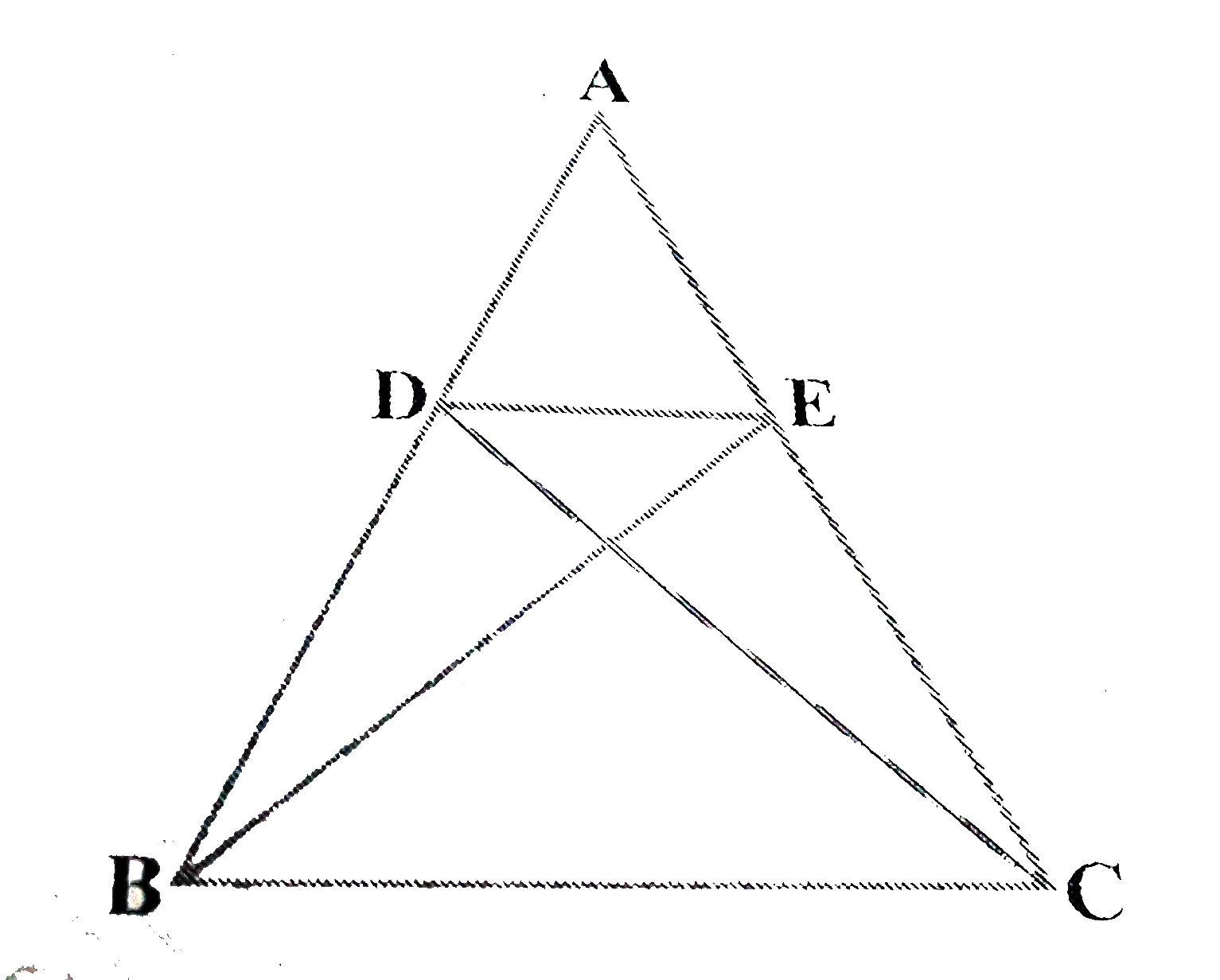In figure, AB∣∣DC and AB=DC. (i)IsΔACD≅ΔCAB? (ii)State the three pairs of matching parts used to answer (iii) Which angle is equal to∠CAD ? (iv) Does it follow from (iii) that A D || B C ?
Let's solve the problem step-by-step.
Step 1: Identify the triangles
We are given that AB∥DC and AB=DC. We need to check if △ACD is congruent to △CAB.
Step 2: Use the properties of congruence
To prove that △ACD≅△CAB, we can use the Side-Angle-Side (SAS) congruence criterion.
1. Common Side: The side AC is common to both triangles. Thus, AC=AC.
2. Given Sides: We know that AB=DC (given).
3. Angles: Since AB∥DC, the angles ∠BAC and ∠ACD are alternate interior angles. Therefore, ∠BAC=∠ACD.
Conclusion for Part (i)
From the above information, we can conclude that:
- AC=AC (common side)
- AB=DC (given)
- ∠BAC=∠ACD (alternate interior angles)
Thus, by the SAS criterion, △ACD≅△CAB.
Step 3: State the three pairs of matching parts (Part ii)
The three pairs of matching parts used to establish the congruence are:
1. AC=AC (common side)
2. AB=DC (given)
3. ∠BAC=∠ACD (alternate interior angles)
Step 4: Identify the angle equal to ∠CAD (Part iii)
Since △ACD≅△CAB, the corresponding angles are equal. Therefore, ∠CAD is equal to ∠ACB.
Step 5: Determine if AD∥BC (Part iv)
Since we established that ∠CAD=∠ACB and AC is the transversal, we can conclude that:
- If two lines are cut by a transversal and the alternate interior angles are equal, then the lines are parallel.
Thus, AD∥BC.
Summary of Answers
(i) Yes, △ACD≅△CAB.
(ii) The three pairs of matching parts are:
1. AC=AC
2. AB=DC
3. ∠BAC=∠ACD
(iii) ∠CAD=∠ACB.
(iv) Yes, it follows that AD∥BC.
We are given that AB∥DC and AB=DC. We need to check if △ACD is congruent to △CAB.
To prove that △ACD≅△CAB, we can use the Side-Angle-Side (SAS) congruence criterion.
2. Given Sides: We know that AB=DC (given).
3. Angles: Since AB∥DC, the angles ∠BAC and ∠ACD are alternate interior angles. Therefore, ∠BAC=∠ACD.
From the above information, we can conclude that:
- AC=AC (common side)
- AB=DC (given)
- ∠BAC=∠ACD (alternate interior angles)
The three pairs of matching parts used to establish the congruence are:
1. AC=AC (common side)
2. AB=DC (given)
3. ∠BAC=∠ACD (alternate interior angles)
Since △ACD≅△CAB, the corresponding angles are equal. Therefore, ∠CAD is equal to ∠ACB.
Since we established that ∠CAD=∠ACB and AC is the transversal, we can conclude that:
- If two lines are cut by a transversal and the alternate interior angles are equal, then the lines are parallel.
(i) Yes, △ACD≅△CAB.
1. AC=AC
2. AB=DC
3. ∠BAC=∠ACD
Topper's Solved these Questions
Similar Questions
In Fig,16, AD = DC and AB = BC
(i) IsΔABD≅ΔCBD?
(ii) State the three parts of matching pairs you have used to answer (i).
View SolutionIn Fig.47, BD and CE are altitudes ofΔABC and BD=CE. IsΔBCD≅ΔCBE? State the three pairs or matching parts you have used to answer (i)
View SolutionIn Figure, AB=AC and DB=DC. Prove that ∠ABD=∠ACD
View SolutionIn Fig.37, AD bisects ∠A and AD⊥ BC. IsΔADB≅ΔADC? State the three pairs of matching parts you have used in (i) Is it true to say that BD=DC?
View SolutionIn Figure ABDC and ADBC. Prove that ∠DAB= ∠DCB
View SolutionIn Figure, AB=AC and DB=DC, find the ratio ∠ABD : ∠ACD
View SolutionIn Figure, it is given that AB=CD and AD=BC. Prove that ADC≅CBA
View SolutionIn figure, if ΔABE≅ΔACD, show that ΔADE~ΔABC.

View SolutionIn Figure, it is given that ∠A=∠C and AB=BC. Prove that ABD ≅CBE
View SolutionΔABC is isosceles with AB=AC. AD is the altitude from A on BC. Is ΔABD≅ΔACD? State the pairs of matching parts you have used to answer (i). Is it true to say that BD= DC?
View Solution
